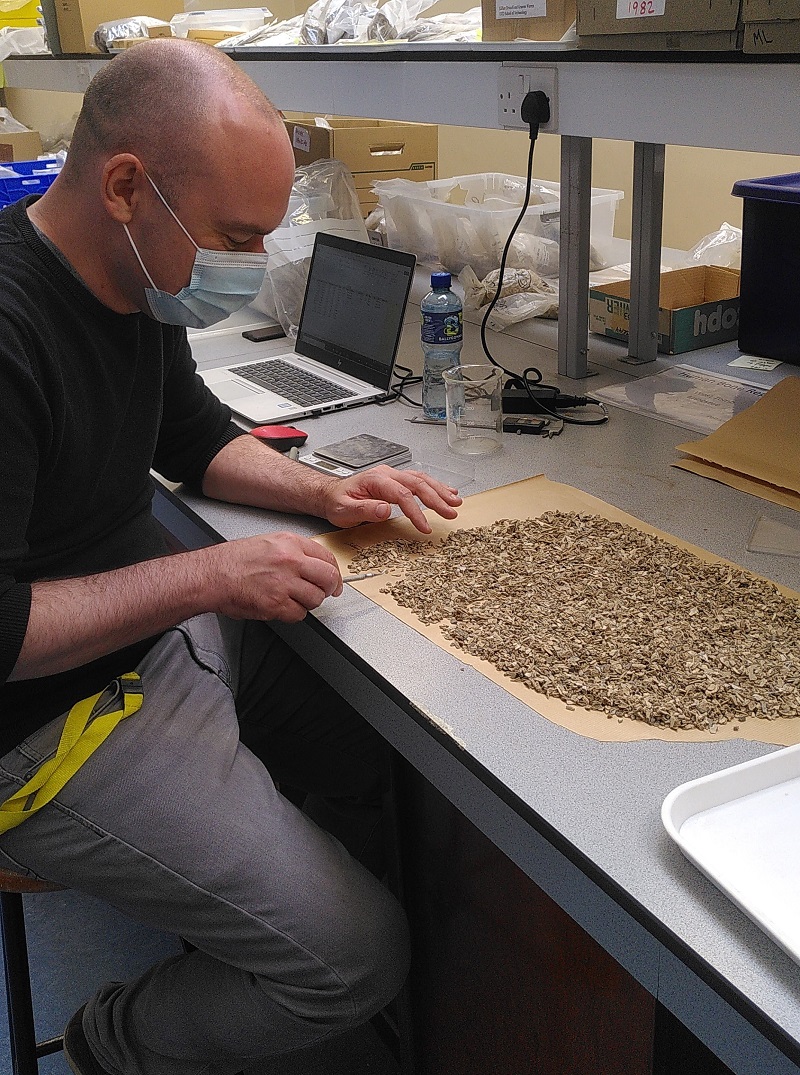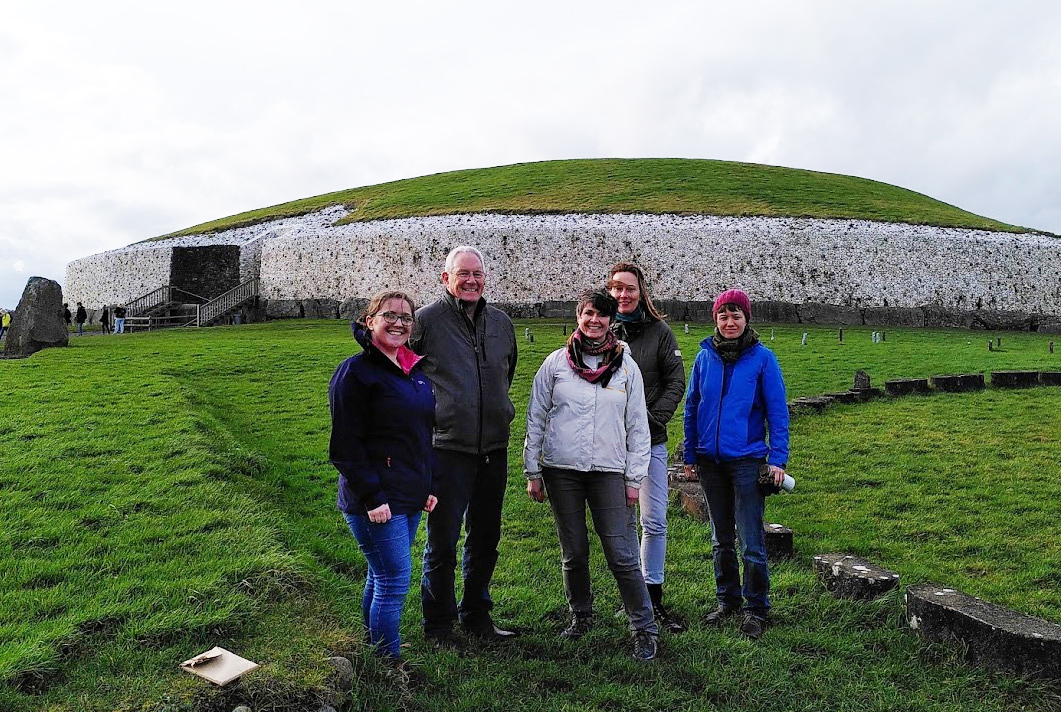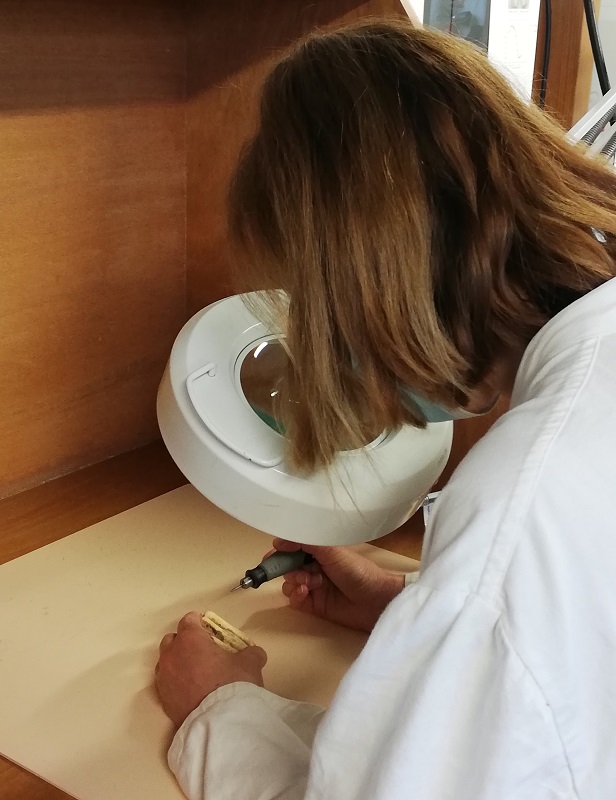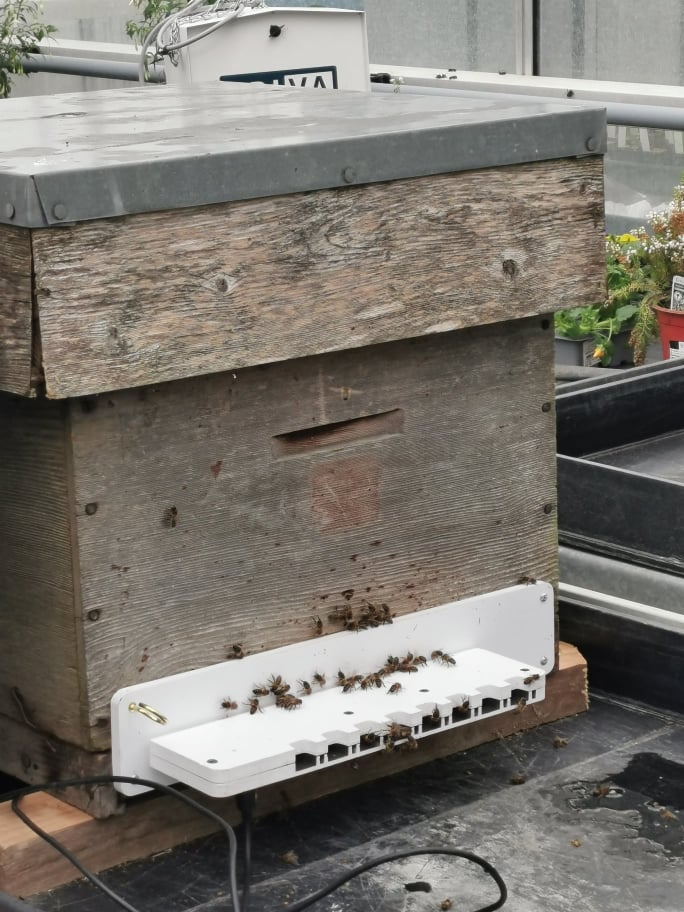Passage Tomb Project latest research
In research recently published in PLoS ONE in January 2023, Jessica Smyth's research explores how passage tombs represent some of the greatest achievements of human engineering and creative expression, involving the transport and erection of stone blocks weighing many tonnes, elaborate sequences of stone carving, and precise astronomical alignments.

Project collaborator Dr Jonny Geber, University of Edinburgh, analysing cremated human bone from Knockroe passage tomb, Co. Kilkenny
Hundreds of these monuments dot the Atlantic coastline, and some of the very largest passage tombs are clustered in ceremonial complexes. They include four UNESCO World Heritage Sites: three inscribed sites (‘Archaeological Ensemble of the Bend of the Boyne’, Ireland; ‘Heart of Neolithic Orkney’, Scotland; ‘Antequera Dolmens’, Spain) and one tentative list site (‘Sites mégalithiques de Carnac’, France). Passage tombs such as Maes Howe in Orkney and Newgrange in eastern Ireland represent the zenith of this phenomenon, bearing unique testimony to a cultural tradition over 6000 years old which is recognised as ‘a feature of outstanding importance’ in European prehistory (UNESCO 1993).
Neolithic Ireland, c. 4000 – 2500 BC, is most widely recognised for the extent and scale of its megalithic monuments, such as Newgrange. The upstanding and frequently imposing remains of these monuments have been the focus of antiquarian attention from at least the 17th century, their presence variously interpreted as the beds of fleeing heroes, burial places of giants, or edifices of the ‘Danes’.
In the first half of the 19th century, an increase in documented associations with human bone helped shift consensus on the function of these monuments - particularly the smaller, more denuded examples - from that of druid’s altar to sepulchral chamber. This occurred alongside growing recognition of native Irish input into their construction, rather than Danes or other foreign groups. The subsequent turn to a more ‘scientific’ view of megaliths led to antiquarians concentrating more on describing, classifying and comparing monuments, with the first extensive surveys undertaken in the late 19th century. Systematic survey appeared in the mid-20th century with the work of the Megalithic Survey, commencing in 1949 and overseen by the Ordnance Survey of Ireland.

Passage Tomb People project team members outside Newgrange passage tomb
Ironically, given that many passage tombs contain large deposits of human remains, we know little about the nature and structure of the prehistoric communities that raised them. Some of the most basic questions remain unanswered: who were these builders, and what worlds were they part of? What types of resources underpinned these staggering feats of engineering? Over the past four years, the ‘Passage Tomb People’ project, funded by an IRC Laureate award, has been investigating the social drivers of passage tomb construction along the Atlantic Façade, drilling down into the archaeology of three key zones – Ireland, North Wales and Orkney.
Erected several centuries after the arrival of farming in each region, these tombs may be responses to economic stress or, equally, the result of surplus and increasing social competition. ‘Passage Tomb People’ is probing the connections between monument construction and changes in farming practice, diet and environment, testing whether similar factors triggered similar behaviours in each area. This is being achieved through large-scale programmes of molecular and isotopic analyses, and the main lines of investigation involve (i) dietary assessments via carbon and nitrogen stable isotope analyses of human and animal skeletal remains and food residues in pottery, (ii) strontium isotope analyses to investigate mobility and connectivity, (iii) animal species identification and sexing via collagen peptide ‘fingerprinting’, and (iv) systematic radiocarbon dating of bone and pottery lipids to further refine chronologies.
Passage Tomb People’s latest paper reveals the first evidence for animal traction in Ireland or Britain, at c. 3600 BC, traced from bone pathologies on a large cattle assemblage excavated along the M2 motorway of Dublin city. Intriguingly, this evidence is contemporary with the appearance of the earliest forms of passage tombs in Ireland.

Project zooarchaeologist Dr Fabienne Pigière sampling Neolithic cattle teeth for stable isotope analysis
Further reading
Pigière F, Smyth J (2023) First evidence for cattle traction in Middle Neolithic Ireland: A pivotal element for resource exploitation. PLoS ONE 18(1): e0279556. https://doi.org/10.1371/journal.pone.0279556
Project website: www.passagetombpeople.com
BBC Reels on the megalithic tombs of ancient Ireland featuring Jessica Smyth and Steve Davis: https://www.bbc.com/reel/video/p0dzbtgw/the-megalithic-tombs-of-ancient-ireland

.jpg)
